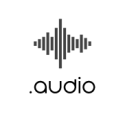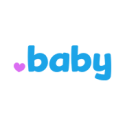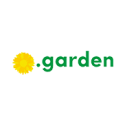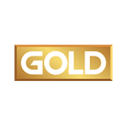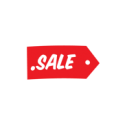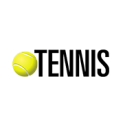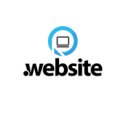Marketing News and Reviews
social media channels, visitors traffic and engagements
Best blogging platforms for every type of blog
If you’ve ever had a blog before, you probably know what a hassle it can be to decide which blogging platform to choose. Each boasts a long list of tools and features that can start to sound alike after you’ve browsed five or six of them.
If you’re looking to start your first blog, choosing the right blogging platform can be even more difficult. Especially when (and we all know this happens) everyone you know has a different, and often passionate, opinion on which one is best.
In this guide to the best blogging platforms, we make it easy for you to choose the best blogging platform for your business or personal blogging needs. You’ll discover which are easy or difficult to use, how much they cost, why people do and don’t like them, and who each platform is best suited to.
This guide will save you hours of research time and help point you in the right direction when looking for a blogging platform that fits your needs.
Looking for a blogging service you can stick with for years to come? Your journey starts here!
Best blogging platforms
What is a blogging platform?
What to look for when choosing a blogging platform
8 Best blogging platforms
WordPress
Medium
Wix
Squarespace
Joomla!
Weebly
Blogger
Tumblr
How to get your first 5,000 blog readers
What is a blogging platform?
A blogging platform is a type of software or service that allows you to publish online content in the form of a blog.
Blogging software, such as WordPress or Wix, requires “hosting” to go live on the internet. Hosting is often included with blogging software, for a monthly fee. Most blogging software doubles as website-builder software so you can build your website alongside your blog or integrate it at a later time.
Blogging services, such as Medium and Tumblr, host your blog for you. These are blog-only services that do not allow you to create a website. They are less expensive or free and easier to use. However, blogging services allow you very little control over your design. They also leave you heavily reliant on the success of the platform for continued blogging.
What to look for when choosing a blogging platform
When choosing the best platform for your blog, consider your needs, goals, and level of technical expertise.
Is the platform user-friendly and easy to use?
Does it allow for the...
https://blog.aweber.com/learn/best-blo
Instagram SEO best practices to increase your reach
If you’ve ever wondered whether your small Instagram account can compete with giant brands on Instagram, this article is for you.
Building an audience on Instagram can feel intimidating.
Fortunately, understanding Instagram search engine optimization (SEO) can put the power of brand reach in your hands, no matter how small your business or how limited your budget.
However, if it seems tougher than ever to gain new followers and engage your audience on Instagram, you’re not imagining things. Instagram, now used by 45% of the world’s population, brings more than 2.4 billion viewers to the platform each month - along with a lot of competition for their attention.
And, if you’re still banking on compelling content and hashtags to expand your brand reach, you may have a tough time keeping up.
Today’s Instagram ranking system revolves around the platform’s native SEO and a handful of algorithm indicators.
The good news is that it’s not hard to learn or implement SEO on Instagram. We show you how to do it, plus give you some tips for gaining favor with its algorithms, in the guide below.
Instagram SEO tips, instructions, and best practices
What is Instagram SEO?Are hashtags enough for Instagram SEO?How to optimize your Instagram profile and contentHow to optimize your Instagram profileHow to optimize Instagram image postsHow to optimize Instagram ReelsHow to optimize Instagram StoriesWhat are Instagram ranking signals?Instagram SEO best practicesEnhancing Instagram SEO with email marketing
What is Instagram SEO?
Instagram search engine optimization (SEO) is a way of presenting your content so that it ranks higher on Instagram Search results and in user feeds.
The platform’s algorithms are what determine how well your content ranks.
The Instagram algorithms are sets of rules and calculations used to organize and prioritize content in users’ feeds. Instagram algorithms are complex formulas, the full context of which is only known to Instagram.
“A thoughtful Instagram SEO strategy helps you organically appear in searches and stand out in the feed. It enables you to build an audience that truly cares about your brand.
But simply posting photos isn't enough. Optimizing your content for discoverability is vital. Like Google, Instagram has an algorithm that surfaces content based on...
https://blog.aweber.com/learn/instagra
Facebook Lead Ads: Questions, answers, and how to get started
Prices are going up.
But it’s not gasoline or eggs at the grocery store that’s the problem.
Call it “digital lead inflation.” The cost of finding potential customers is going up fast. And if you’re not careful, you could be priced out of the market.
The cost of leads increased 19% year-over-year in one study. Competition is fierce. With leads at a premium, having a lead-generation machine in place is more important than ever.
For many businesses, the answer is easy: Facebook Lead Ads.
Businesses love Facebook Lead Ads because it makes targeting such a specific audience easy. That may be why the average conversion rate on Facebook ads is over 9%.
But not every business is on Facebook. And there are so many options to choose from that building your first campaign can get confusing.
In this article, we’ll take you through Facebook Lead Ads and explain how it works. By the end, you’ll have a step-by-step manual for generating Facebook leads to plug into your business.
Generating leads on Facebook: common questions
What’s the appeal of Facebook Lead Ads?
In a word? Reach. And Facebook’s reach has two things going for it: scope and specificity.
The scope of Facebook’s audience is massive. In 2022, over 70% of all Internet users in the U.S. were also regular users of Facebook.
The specificity also sets it apart. Facebook’s got a heap of data on its customers, and it lets advertisers drill down to the teensiest variables. If you want to target “Instagram Reels viewers who love pickleball,” you’re there in a few clicks.
But there’s also a kicker:
If you draw potential customers on Facebook, they can sign up as warm leads without leaving the platform.
This feature makes your ads as low-friction as possible. And it may explain why Facebook’s conversion rates are so high.
How much do Facebook leads cost?
These costs will vary, depending on a few factors:
Target audience: The larger your audience is, the more you might have to pay to capture leads at first. Niche down over time to find the warmest possible leads.
Competition: If you’re competing for jet-setting CEOs, don’t be surprised to find the competition stiff. Facebook uses a bid-based system, which will take a little getting used to.
What is the format for Facebook Lead Ads?
You’ll have options here, though the typical...
https://blog.aweber.com/learn/how-to-g
What is microblogging? A comprehensive guide with expert insights, tips, and examples
You’ve probably heard about people who have built massive and highly-engaged social media audiences from scratch, without spending a dime on advertising. Perhaps you wrote them off as “lucky unicorns,” or figured they just have some type of charisma that ordinary people lack.
What if you stumbled on a method that nearly anyone can use to grow a large, engaged social media audience?
And what if that strategy didn’t only make your brand popular, but also drove significant traffic, engagement, and conversions for your business?
If you’re looking for a way to get your business off the ground with marketing that doesn’t require a lot of time or money, microblogging may be the answer.
Microblogging offers a solid path to building a loyal and engaged social media following. And if you approach it strategically, it can translate into impressive profits.
In this guide, you’ll discover exactly what microblogging is, how you can use it to grow your business, and what you need to do to get started.
We’ve included microblogging tips and advice from experts across several industries, and plenty of examples, to help you brainstorm ideas for getting started.
Comprehensive guide to microblogging for your business
What is microblogging?Benefits of microbloggingPopular microblogging platformsHow to use microblogging for lead genHow to start microblogging?
What is microblogging?
Microblogging is publishing short pieces of content on a frequent and consistent basis, usually on social media or other community platforms. Microblogging is an excellent way to grow your business, thanks to its high potential for engagement and ability to generate brand awareness.
Microblogging styles, formats, and topics differ from one brand to the next, but the most successful ones provide valuable, compelling content that their target audience can’t resist.
Microblogging works with nearly any format that allows short-form content, such as:
Short text posts (usually less than 200 words)
Images with brief or no captions
Short-form videos, such as Reels, TikToks, or YouTube Shorts
Stories on Instagram or Facebook
Memes or GIFs
Audio posts
”Microblogging is actually great and very effective since you don't have to wait for a publishing team or for anything to be physically printed. All you need to do is proofread the...
https://blog.aweber.com/learn/microblo
How to start your Etsy shop: A step-by-step guide
If you’re daydreaming about starting your own business and you love crafts, you’ve probably heard about Etsy—one of the biggest online marketplaces for handmade or vintage items and craft supplies.
Whether you want to earn extra bucks on the side or you want to invest your entire focus on starting an online business, with almost 500 million visits monthly, Etsy can be the perfect opportunity to get in front of an audience looking for unique items.
Etsy had 96.2 million buyers in 2023; over two million more than it did in 2022. To top it off, Etsy has a significant mass of loyal customers—40% of Etsy buyers are repeat customers, and 8.9% are “habitual buyers,” meaning consumers who make repeat purchases several times without the process of high involvement.
If you’re grappling with the question of how to start an Etsy shop, keep reading. In this article, we’ll take you through the steps of creating an Etsy shop, list the tools you need to jump-start your success, and share best practices to help you boost Etsy shop sales.
How to start an Etsy shop
Starting an Etsy shop is a simple and straightforward process. At each step, there are detailed instructions for the information you need to fill in. Don’t rush—make sure you go through all the steps and create the foundation of your Etsy shop. Here’s a step-by-step guide on how to do it.
#1: Create an account
If you’re just starting your Etsy journey, the first step is to create an Etsy account. This is a simple process where you need to add your email address, first name, and password. Once you register, you can open your Etsy shop by selecting “Sell on Etsy” from your account menu.
During this step, you can answer a few screening questions, such as what brings you to Etsy and if there is anything you’d like help with. Whether you are selling for the first time ever, or you want to expand your business by selling on Etsy, the platform can help you with guidance on how to make the most out of Etsy.
You can also choose different topics you want to get more resources on, such as deciding what to sell, choosing a name for the shop, selling online, or taking product photos.
#2: Enter shop preferences
Once you go through the screening questions, you can start building the foundations of your Etsy shop. First, you...
https://blog.aweber.com/learn/how-to-s
How to design a newsletter in 5 quick and easy sections
I don’t have a creative bone in my body. So when I first started creating newsletters, I would always second guess myself, which usually left me just giving up and going with a plain white background, black text newsletter.
I can’t tell you how many times I’ve tried to start writing only to quickly get discouraged that my newsletter doesn’t look all that great. It looks plain. It looks average. I am not afraid to admit - It would look boring and I wouldn’t read it myself.
So I made it my mission to find out what makes a great looking newsletter that people could not wait to read. After countless hours of research I’ve listed the sections that appear most often in the most popular newsletters.
Section of a newsletter
Memorable banner
Primary story and images
Promotion your reader’s won’t miss
Recent content
Requesting questions and ideas
How to design a newsletter
By breaking your newsletter into sections, designing a newsletter can be as easy as assembling each section in the right order.
A memorable banner
I’ve subscribed to so many newsletters that I often lose track of things. What I’ve started noticing is that some authors forget to remind me who they are, what they offer, and why I signed up in the first place.
Let’s not assume people remember us from our catchy email address. You need to begin every email by re-establishing your brand, identifying who you are and why it matters.
A memorable branded banner can be quite simple. It’s recommended to include your logo, brand colors, and most importantly, a statement as to why your newsletter exists and matters to your subscribers.
Check out this banner created for the RuhRoh newsletter:
As you can see the brand header section is strong with a dark background. The logo and newsletter name are on the left. And the thing that catches the eye is a reminder that this newsletter is here to help people avoid common problems of owning a new puppy.
Here’s a simple way you can design a branded newsletter header using Canva:
1 - Select Create a design
2 - Go to custom size and enter 1200 x 200 px, then select create new design
3 - The great thing about Canva is you don’t have to be a professional designer to create stunning visuals. You can choose one of their pre designed banners to get started. Change the colors to your brand colors,...
https://blog.aweber.com/learn/how-to-d
Where to sell digital products: The best platforms for creators
People are flocking to the digital economy for more freedom, flexibility, and, ideally, more dollars.
And it’s working. According to Goldman Sachs Research, “the increase in digital media consumption and the advent of technology…has lowered barriers to content creation.” By 2027, the creator economy could be worth half a trillion dollars.
Content creators are taking advantage. Many of them have already abandoned the nine-to-five grind. They’re now working for themselves.
But what if you sell a service instead of a product? Suddenly you find yourself facing a bottleneck. Your work still requires effort, time, and your personal presence.
That’s why it feels like you gave up the nine-to-five…just to start a new nine-to-five.
The solution is to leverage your time by switching from services to products. What if you could build a repeatable digital product that sells itself while you sleep? You’d decouple your labor from your income.
But before you do, you’ll have to know a few things about digital products:
What you can sell?
What sales strategies are succeeding?
Where are all the sales happening right now?
Let’s answer all three with special emphasis on that critical question: where?
What is a digital product?
A digital product is an electronic asset you can sell with little to no cost of duplication. Typically, a digital product may be a piece of media like an eBook. Users can download the product and put it to use on their device of choice.
What are examples of digital products?
If you think it sounds niche, consider this: Amazon sells approximately half a billion eBooks per year. And 83% of all video game sales are completely digital.
Online courses, training videos, webinars, eBooks, music, PDFs, digital art, widgets, and apps. Digital products are so ubiquitous, we barely think of them as digital anymore.
We just think of them as products.
Digital products are so popular, many creators “niche down” their services. You can sell training for unique markets because it’s so easy to find them now.
Example:
Take Leela Sinha, a coach offering leadership intensive for a specific personality type. Leela has a niche market, coaching “intensives,” or people with risk-taking tendencies.
Leela’s story reinforces why digital products are so popular now, but not from the...
https://blog.aweber.com/learn/where-to
How to create landing pages that convert (plus top examples & templates)
Whether you’re looking to drive sales, sign ups, or downloads, a highly optimized landing page can provide real value by bringing your visitors to a page targeted directly to their needs.
This is important because a landing page tailored to the needs of your customer can increase conversion by 300%.
Now we all want to increase conversion by a couple hundred percent but you can’t just throw up a landing page and like magic, you immediately get conversions. It actually takes a few essential tips. Follow these tips to give yourself the best chance for success. In this blog we’ll go over what it takes to create a landing page that converts.
Establish your USP
Define a strong, value-driven USP (Unique Selling Point) and build your landing page around it.
Your USP is the thing that sets you apart from the competition and the reason why people will choose you over everyone else.
You can use your USP to create strong headlines, images, and copy that resonates with your target audience.
Example of landing page using USP:
In this example, we created a landing page targeted to the unique selling position we provide YouTubers. The headline addresses a key need for this audience, while the image highlights the unique ways we can help automate the increase of video views.
Keep the design clean and simple
Many landing pages suffer because there’s just too much going on. Approach landing page design with a feeling of respect for the time of the visitor.
Keep reader focused
Remember, everything about your landing page should be geared towards getting the user to convert. This means removing anything that might draw their attention away from your offer.
Use of white space
White space is an important part of a landing page design, so make the most of it. Sometimes, what you leave off the page is as powerful as what you include. White space removes congestion and gives the brain space to think. It also forces the eyes to focus on the more important elements of your page.
Example of a clean and simple landing page:
BetterUp designed a very simple, yet effective landing page. While not a white background, the design of this landing page give you plenty of “breathing space”, helping your draw the reader in without overwhelming them.
Create headlines that hit home
80% of visitors will read...
https://blog.aweber.com/learn/create-l
Monetize your blog: 11 Easy ways to turn your passion into profit
These days, the opportunities for making money online are seemingly endless. One of the most tried-and-true methods for generating an online income, however, is that of monetizing your blog. Whether you’re looking to earn a healthy side income or make a living from blogging, there are plenty of opportunities worth exploring.
So, just how much money can you make as a blogger—and how do you make money blogging, anyway? This comprehensive blog will explain:
Best ways to monetize your blog
Let’s explore the best ways for you to turn your passion for blogging into a highly profitable venture, ranging from advertising and affiliate marketing to monetizing through new channels.
Affiliate marketing
You can turn your passion for blogging into a profitable venture with affiliate marketing. By partnering with relevant brands and incorporating their affiliate links within your content, you can earn a commission for every successful referral or sale made through your blog.
As you can probably imagine, the profits for affiliate marketing can add up very quickly—especially if you have a large reader base.
How can you become a successful affiliate marketer:
1 - Synergy with product or service
The key lies in selecting products or services that align with your blog's niche and resonate with your audience, ensuring that the recommendations you make are genuine and valuable.
For example, if you are a travel blogger you can sign up to be an affiliate marketer for booking.com.
2 - Use keyword research
Be strategic in what you write about. Perform keyword research on topics that have a high monthly search volume and lower keyword difficulty.
For example, as an affiliate marketer for booking.com, you could perform keyword research on ahrefs for “book hotel” limiting the keyword difficulty to anything between 0 - 50.
The results will yield several strong topics like:
How to book a hotel
Best way to book a hotel
How to book hotel
3 - Write a blog about the product service
Write a blog about the product or service and include your affiliate link. Now each time a reader makes a purchase through your affiliate link, you receive a certain percentage of the sale.
For example, based on the keyword research from “book hotel”, you could write a blog about the best ways to book a hotel, listing booking.com...
https://blog.aweber.com/learn/how-to-m
